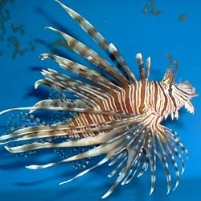It May Be Time for Invasive Species to Step Up to the Plate
Tuesday, July 12, 2011
 Lionfish (Photo: National Oceanic and Atmospheric Administration)
Lionfish (Photo: National Oceanic and Atmospheric Administration)
Environmentalists are hoping Americans are ready to contribute to the cause of saving domestic species under attack from foreign invaders—by eating them.
Invasive species, those plants and creatures not native to the U.S., have been growing in dangerous numbers in certain regions and threatening the survival of domestic flora and fauna. Conservationists have tried many tactics to mitigate the problem, without success.
Now, the plan is to employ the most dominant species on the planet.
“Humans are the most ubiquitous predators on earth,” Philip Kramer, director of the Caribbean program for the Nature Conservancy, told the New York Times. “Instead of eating something like shark fin soup, why not eat a species that is causing harm, and with your meal make a positive contribution?”
For example, wildlife officials in Florida would love to see lionfish, which are hurting reef fish populations along the state’s coast and in the Caribbean, become a regular on lunch and dinner menus.
Elsewhere, biologists wouldn’t mind seeing the Asian carp (and its destructive movement up the Mississippi River) vanish into the bellies of Southerners and Midwesterners.
Other invasive species that are edible include Brassica rapa (aka turnip mustard or field mustard), American cannonball jellyfish, Kudzu and European green crabs.
-Noel Brinkerhoff
Answer for Invasive Species: Put It on a Plate and Eat It (by Elisabeth Rosenthal, New York Times)
On the Menu: Taking a Bite Out of Invasive Species (by Wynne Parry, LiveScience)
Top 10 Invasive Species You Can Eat (by Robin Shreeves, Mother Nature Network)
- Top Stories
- Unusual News
- Where is the Money Going?
- Controversies
- U.S. and the World
- Appointments and Resignations
- Latest News
- Trump to Stop Deportations If…
- Trump Denounces World Series
- What If China Invaded the United States?
- Donald Trump Has a Mental Health Problem and It Has a Name
- Trump Goes on Renaming Frenzy






Comments